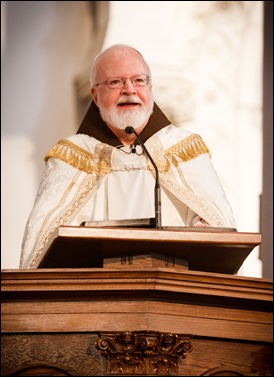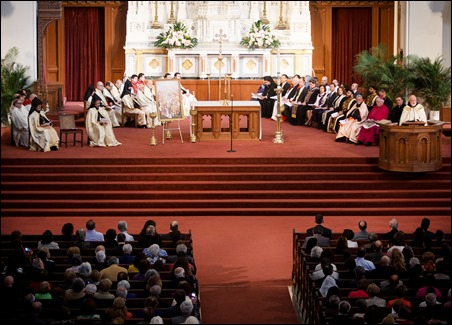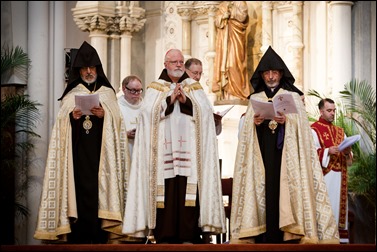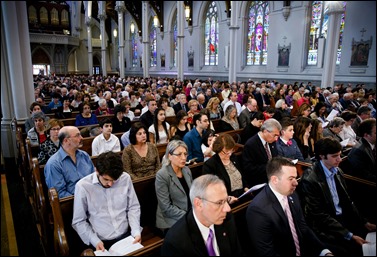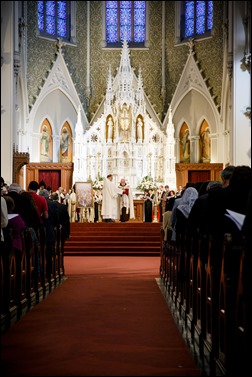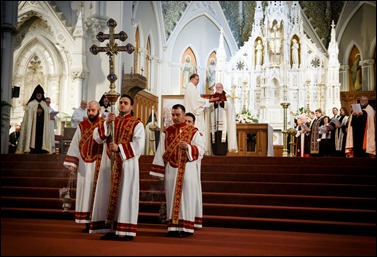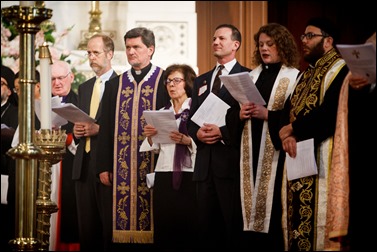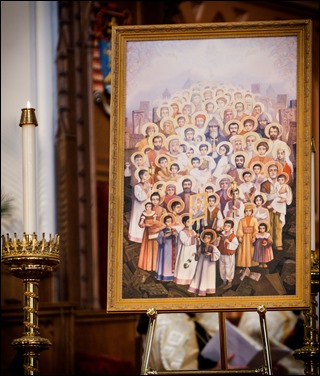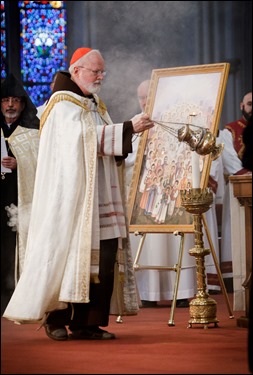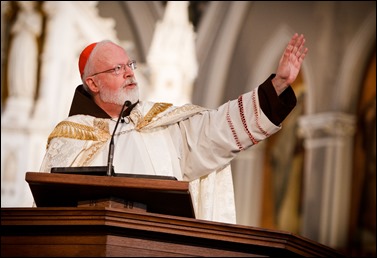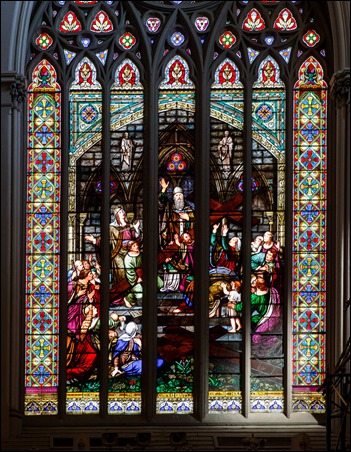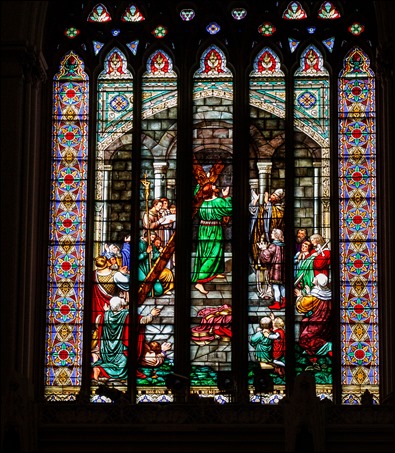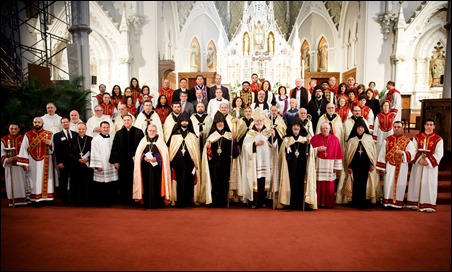Last Friday, I had one of my periodic gatherings with seminarians by class.
This was just one more opportunity to get together seminarians in small groups to be able to pray with them and dialogue with them about their vocations and the Church. These gatherings are always great joy for me.
– – –
On Saturday I went to Roxbury for the dedication and blessing of a Habitat for Humanity house that will provide a home for two local families.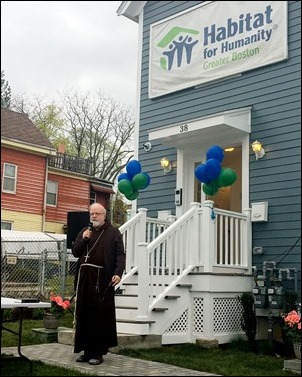
The international organization Habitat for Humanity is well known for building or rehabilitating houses for people in need.
In this case, a Catholic layman has donated a substantial sum of money to rehab or build 50 houses around the country. The benefactor has requested these houses be dedicated to Pope Francis, who is in part the inspiration for his generous donations to sponsor these homes.
Habitat for Humanity is an organization that depends a great deal on volunteer labor. In addition to the funds provided by the benefactor, many people from the community, including the families themselves, contributed their labor to renovate this house.
“The Acoustics”, a choral group from Boston College performed at the dedication.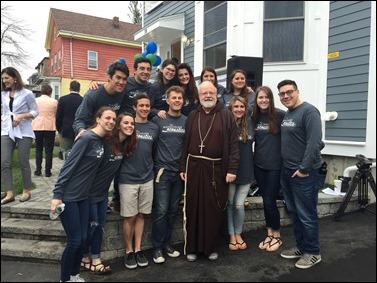
At the dedication service we were joined by representatives from Habitat for Humanity and, of course the families that will be moving into the new house. They were obviously thrilled and excited by the fact that they are going to have such a lovely home to raise their children in.
Certainly, the issue of affordable housing is very serious in the Boston area. In the archdiocese we have our Planning Office for Urban Affairs, which does a great deal to create new housing for low and moderate income people. So, I was pleased to be a part of this celebration of the work of Habitat for Humanity, and we are very happy to support the wonderful work they do, both in the United States and abroad.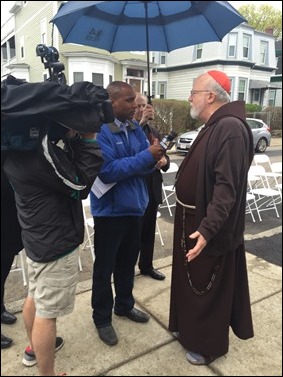
– – –
Then, Saturday afternoon, we held our first ever Armenian Genocide Commemoration Service at the Cathedral the Holy Cross. Recalling the events of the genocide are important as we call people to work for a world where there is greater tolerance and solidarity.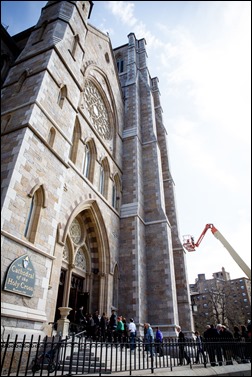
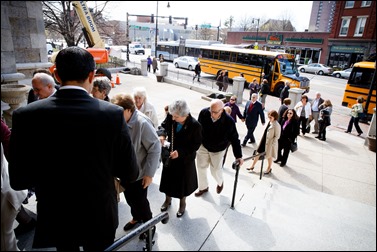
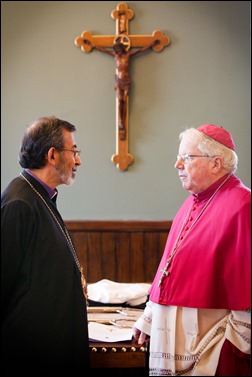
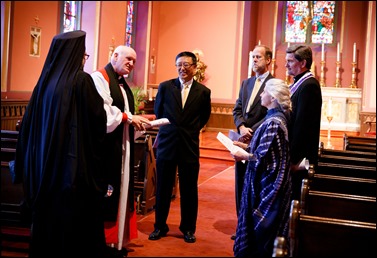
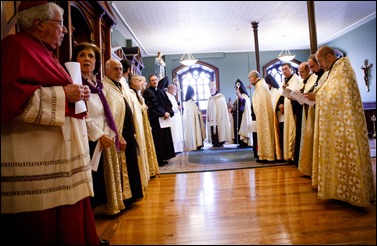
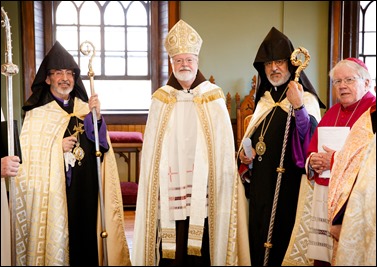
One of the groups that has promoted this whole theme of honoring the Armenian Martyrs is the Sant’Egidio community and the head of the community, Andrea Bartoli, met with me before Mass. Andrea is a professor of international diplomacy at Seton Hall University in New Jersey, where he often lectures on the Church’s peace initiatives. He himself was involved in Mozambique and other places where the Church has helped broker peace between different warring factions.
The community has also been very much involved in raising awareness of the persecution of Christians throughout the world and Pope John Paul II gave them the Church of San Bartolomeo, an old Franciscan church on the island in the Tiber River, that they have transformed into the shrine of the martyrs of the 20th and 21st century. 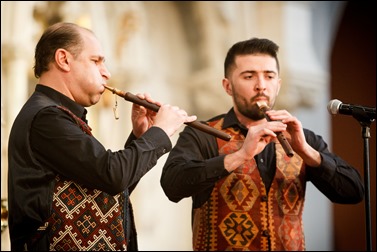
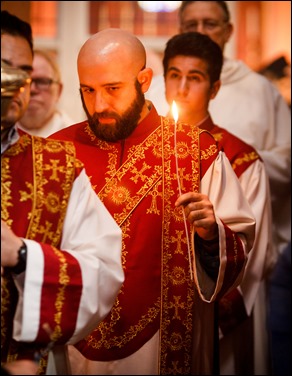
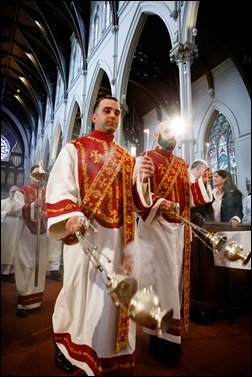
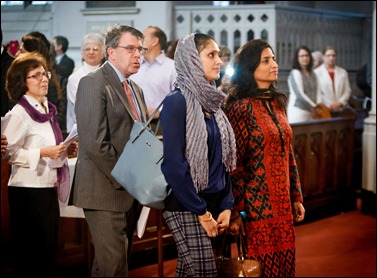
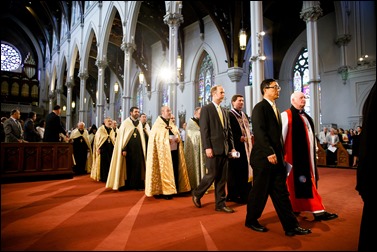
In my homily, I reflected on the fact that one of the tragic yet interesting things about the genocide is that, when the family of nations and people of the world did not react against the Armenian Genocide, it only paved the way for the Holocaust.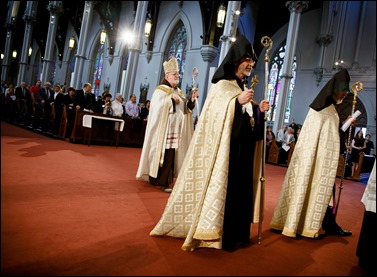
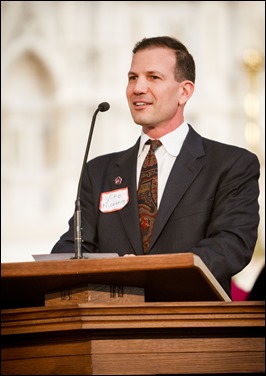
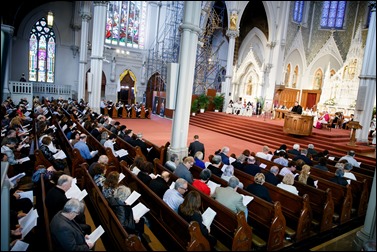
I also spoke about the “ecumenism of blood”, that Pope Francis has mentioned so often. I said how there are so many people, even in our own day, who are dying for their love for Christ — whether they be Catholics, Protestants or Orthodox — and that their witness and love should help us deepen our own faith and to feel closer to one another.
I’d like to share the full text of my homily with you here:
My dear brothers and sisters in Christ, it is for me an immense joy and privilege to welcome all of you to this Ecumenical Commemoration of the Holy Saints and Martyrs of the Armenian Genocide: Remembrance, Witness, and Resurrection.
We all have such fond memories of the visit of the Catolicos Karekin II to Boston. And today is a very special day to welcome so many of our Armenian brothers and sisters as well as members of other churches who have assembled here today in a spirit of fraternity and solidarity. I want to recognize in a special way the various bishops who have joined us for the celebration: Metropolitan Methodius of the Greek Orthodox church, Archbishop Khajag Barsamian, of the diocese of the Armenian Church of America; Archbishop Oshagan Choloyan, of the Eastern prelacy of the Armenian apostolic Church. We are also pleased to welcome the Rev. Avedis Boynerian of the Armenian Evangelical Union of North America.
We are very proud of our own Armenian Catholic community at Holy Cross Parish. I shall never forget the wonderful visit that I had to the Mekitarist Monastery on the island of San Lazzaro degli Armeni in Venice. We are of course delighted to have with us today Msgr. Andon Atamian, vicar general, of the Armenian Catholic Eparchy.
The Scriptures show how leprosy and blindness can be metaphors for spiritual ailments. The leper was cut off from community reflecting the spiritual death in isolation brought about by sin. Blindness indicated the darkness of unbelief and of how easily people can be deceived by appearances rather than seeing creation through God’s eyes.
As people live longer in our modern world, we have a greater experience of the ravages of Alzheimer’s. We see how losing one’s memory reach such havoc on people’s lives. For us Alzheimer’s, as spiritual amnesia, is a metaphor for those who forget about God. If we have forgotten our origins and our destiny, we become very disoriented. Our life is adrift. Spiritual Alzheimer’s causes us to become disconnected from God and from others.
In our memory and our sacred history we discover our true identity and can fulfill our mission in the world. We are consoled by the fact that even though at times we forget about God, he never forgets about us. In the prophet Isaiah we read: “even if a mother should forget her child, I will never forget you.” Our faces are engraved in the palms of God’s hands. When we stray from the father’s house, our God waits anxiously searching the horizons waiting for us to return so that he can run out and embrace us and kiss us and put a ring on our finger and sandals on our feet.
Our task is Christians is to pass on the treasure of the gospel to generations to come. We can do that only by striving to overcome our sinfulness and be worthy witnesses to the good news of Jesus Christ. We must never forget how much our God loves us, especially in moments of darkness and of pain.
Our memory of his unfailing love allows us to say with St. Paul in his words to the Romans: “who shall separate us from the love of Christ? Shall tribulation, or distress, or persecution, or famine, and or nakedness, or peril, or the sword? For I am sure that neither death, nor life, nor angels, nor principalities, nor things present, nor things to come, nor powers, nor height, nor depth, nor anything else in creation, will be able to separate us from the love of God in Christ Jesus our Lord.”
It is that faith, that memory, that conviction that allows us to recall the genocide of a century ago and to know that the love and power of God is stronger than death. Christ’s cross has conquered sin and death for us. By the same token it is important that we do not allow the events of the genocide to slip into oblivion. We must raise the alarm, we must keep the memory alive, so that the future will be safer.
When Adolf Hitler was poised to exterminate entire peoples, he found great consolation in the world’s indifference to the slaughter of a million and a half Armenian Christians. It emboldened his diabolical plans for the Holocaust. In fact, inscribed on one of the walls of the United States Holocaust Memorial Museum in Washington is a statement by Adolf Hitler, who rationalized mass slaughter and expected people simply to avert their eyes and forget: “who, after all, today speaks of the annihilation of the Armenians?”
We must ask ourselves if the world had responded differently to the Armenian genocide, could the Holocaust have been averted. Yes, remembering the Armenian genocide and the Holocaust of World War II are crucial if we are going to prevent more genocide in the future. No true civilization can afford to falsify the historical record or to corrupt the language. To do so is very perilous and will be a prelude to other forms of mass slaughter.
Unfortunately, as the philosopher George Santayana noted, those who cannot remember the past are condemned to repeat it. We can see today how the calamity that befell the Armenians 100 years ago seems to be repeating itself in the wholesale slaughter of Christians in the Middle East by Isis and other terrorist groups.
Pastor Martin Niemoeller was a prominent Lutheran minister who emerged as an outspoken public foe of Adolf Hitler and spent the last seven years of Nazi rule in a concentration camp. Pastor Niemoeller is perhaps best remembered for the quotation:
“First they came for the socialists, and I did not speak out – because I was not a socialist. Then they came for the trade unionists, and I did not speak out – because I was not a trade unionist. Then they came for the Jews, and I did not speak out – because I was not a Jew. Then they came for me – and there was no one left to speak for me.”
Today we are all Armenians. As a newfound Armenian I fear I will never be as adept in your language as Lord Byron, but at least I can say: “Bari galust.” I welcome all of you as we gather to remind the world of the danger of its indifference. Too often we are like the priest and the Levite of the road to Jericho as we pass by our fellow human being left half dead by the side of the road. We must learn to see suffering humanity with eyes of compassion and the vision of faith.
Shortly after Pope Francis was elected our Pope, he made his first papal journey a trip to the island of Lampedusa where thousands of refugees have drowned in the sea. He prayed and cast a wreath of flowers into the watery grave and he warned the world of the globalization of indifference.
Our celebration here today is to echo that same warning and challenge people to remember the sins of the past and to strive to make sure that they do not happen again in the future. We must never allow the world to vilify people because of their race, their religion, their nationality, their language, their politics. The world needs the voice of a sentinel crying out a warning of the dangers that lurks when people nurture the darkness of hatred and prejudice in their hearts.
Tertullian once said that the blood of martyrs is the seed of the Church. We see how the first generations of Christians who valiantly face torture and death gave such a powerful witness that often even their persecutors embrace the faith. For those early Christians martyrdom was the great Christian ideal. It was a generous and courageous witness to the Church’s faith in the resurrection of Jesus Christ. From the time of the persecution of the early Christians in Rome who celebrated the Eucharist on the tombs of the martyrs in the catacombs, we have preserved the custom of putting the relics of martyrs in our altars where the Eucharist is celebrated. All of us who profess the Christian faith have a special devotion to our martyrs who lay down their life to give witness to the church is faith in the resurrection of Jesus Christ.
Pope Francis in an interview that he gave over year ago coined the term “ecumenism of blood.” The Holy Father commented on how in some countries they kill Christians for wearing a cross or having a Bible. They do not ask whether they are Catholics or Anglicans or Lutherans or Orthodox. They are killed because they are Christians. The Holy Father said: “we are united in blood, even though we have not yet managed to take the necessary steps towards unity between us and perhaps the time is not yet come. Unity is a gift we need to ask for.
We live in a time when ecumenism is driven by martyrdom. The persecution of Christians is most visibly associated with the Middle East, Christians in Africa, India, and other places have been targeted and killed. We have only to think of the 21 Egyptian Coptic migrants who were beheaded by Islamic state terrorists in Libya last February. They died proclaiming the name of Christ as they were martyred.
And just a couple weeks ago four Mother Teresa sisters whose only crime was that they were taking care of the elderly poor were brutally executed. Yes the ecumenism of blood continues. Hopefully the example of these witnesses of the faith they help us to grow closer to one another and more faithful to our vocation as disciples of Jesus Christ.
We are here in the Cathedral of the Holy Cross. The principal stained-glass windows are an important part of our iconography here. They speak to us about the Holy Cross. To your left you will see the dramatic scene where St. Helena, the mother of the Emperor Constantine, in the year 325 A.D. discovers the three crosses near the Holy Sepulcher in Jerusalem. They were able to tell which cross was the true cross of Jesus Christ because that cross cures and is life-giving. Jesus has made the cross the tree of life for us. He has conquered sin and death and opened a path to eternal life.
The great window on the other side depicts what took place on September 14, 628 A.D. when the Emperor Heraclitus having rescued the Holy Cross from the Persians, carries the cross into the holy city. At first he was mysteriously impeded from advancing through the gates of the city. The patriarch instructed him to dismount from his steed, and to remove his crown and his shoes and royal robes. Only then could the cross the threshold of Jerusalem with the Holy Cross.
As Jesus’ followers we must learn to carry the cross with humility and love. And we must learn to carry it together, only then will the Christian faith advance as Christ wishes. He prayed at the Last Supper that unity would be the identifying characteristic of his disciples, a unity so deep, so profound, that it would be a reflection of the unity between the Father and the Son in the Holy Trinity.
The million and a half Armenian Christians are not forgotten. Today their death is not only a warning against the evil of hatred and prejudice. Their death is a witness of the Church’s faith in eternal life. The grain of wheat that is buried in the ground produces much fruit. One of the fruits of the Armenian martyrdoms is the ecumenism of blood that unites us in one Lord, one Faith, one Baptism.
The Armenian martyrs’ sacrifice and the sacrifices of today’s martyrs are a cloud of witness, a cloud of martyrs whose love for Christ and courage in the profession of their faith is an invitation to all of us to advance through the gates of the holy city, carrying the glorious cross of Jesus Christ together, with humility and love.
Our martyred brothers and sisters have washed their robes in the blood of the Lamb. The foolish think they are dead, but they live on in the Resurrection of Jesus Christ, our Lord and Redeemer. And today we cry out with faith, “Grant O Lord eternal rest unto thy departed servants and make their memory eternal”.
And I make mine the sentiments of Pope St. John Paul II, who prayed, “May Saint Gregory the Illuminator and the great host of Armenian martyrs and saints watch over you now and in the future! And may the Mother of Christ, Ark of the New Covenant, guide Armenia to the peace which lies beyond the great flood, the peace of God who has set His bow in the clouds as a sign of His everlasting love.”
– – –
Over the course of the Jubilee Year, there are a number of groups that are coming to the Cathedral the Holy Cross on pilgrimage to pass through the Holy Door of Mercy. 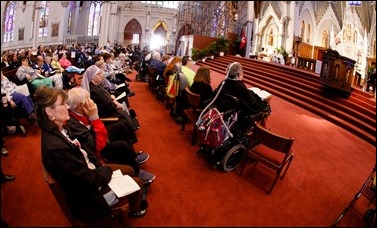
On Sunday we had a Jubilee Year Pilgrimage and Mass for the Sick and Their Caregivers, at which we celebrated the anointing of the sick with scores of people.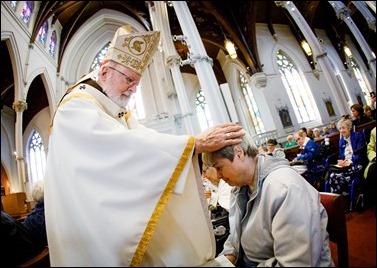
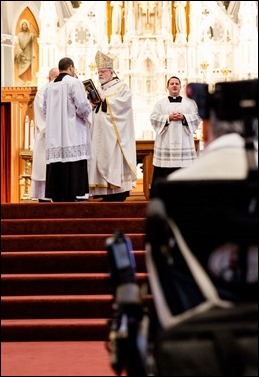
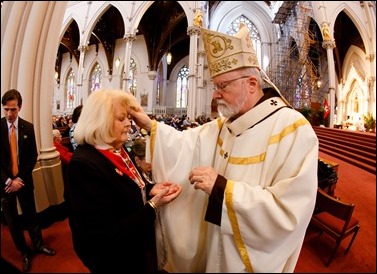
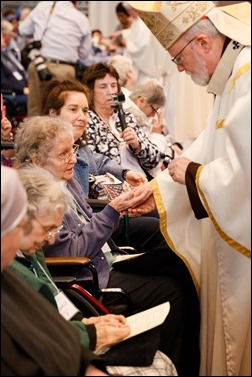
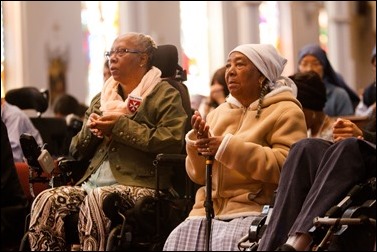
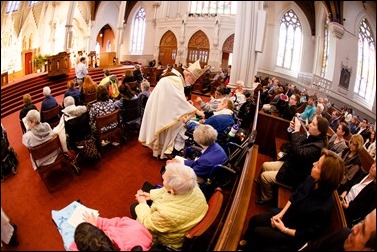
Father Jonathan Gaspar was the architect of the service itself and we were aided by the Order of Malta and Deacon Jim Greer and the office of chaplaincy programs.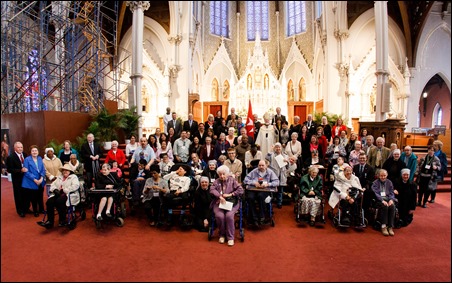
The Mass was a very fitting way to mark the Year of Mercy.
– – –
That day, I also greeted a group of pilgrims from Our Lady of Grace Church in Chelsea who were visiting the Cathedral with Father Jim Barry.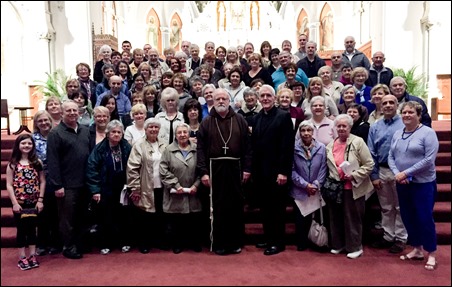
– – –
Monday I attended the wake of Father Raymond Helmick at the Campion Center in Weston.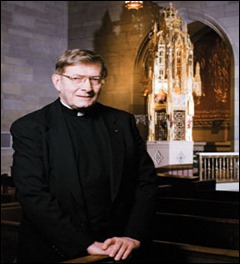
Father Ray Helmick was a very talented and multifaceted individual. As many know, had been very much a presence in the peace negotiations in Ireland and in the Middle East. He was also a long-time professor at Boston College. In recent years he has been very closely associated with his brother’s parish, St. Theresa’s in West Roxbury, where he created a number of mosaics and built the tabernacle tower. His passing will leave a great void.
– – –
Tuesday, we had the dedication of the new wellness center at Newton Country Day School of the Sacred Heart.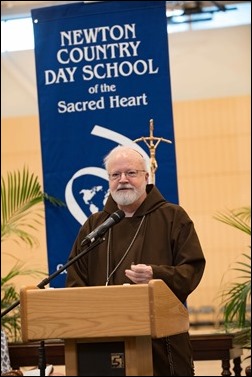
Sister Barbara Rogers had invited us to dedicate the new wellness center and visit the school.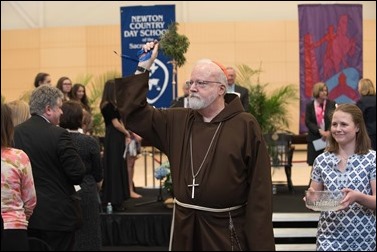
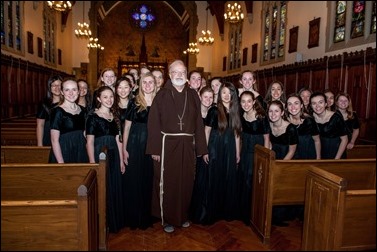 The choir greeted me in the Chapel
The choir greeted me in the Chapel
Newton Country Day is a wonderful Catholic school. In my own family, many of my relatives attended schools of the religious of the Sacred Heart, so I know personally of the extraordinary education that the sisters have provided for many generations of Catholics.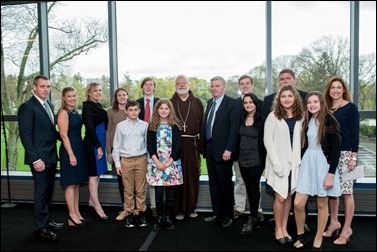
– – –
That evening, I attended a gathering of the Campaign for Catholic schools hosted at the home of Herbert and Charlotte Wagner in Cambridge. 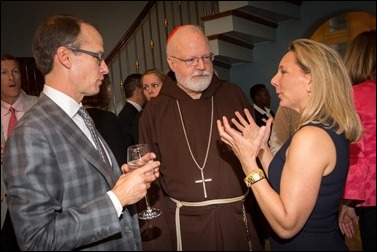
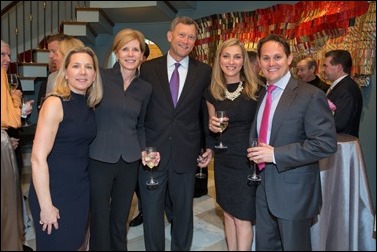
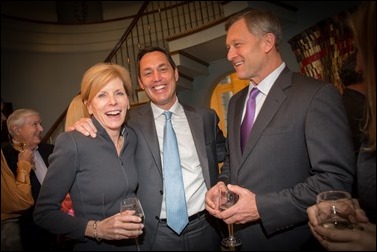
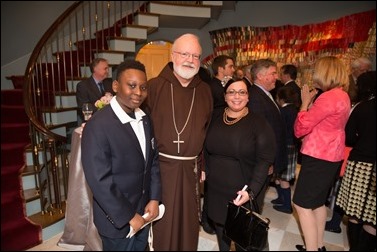
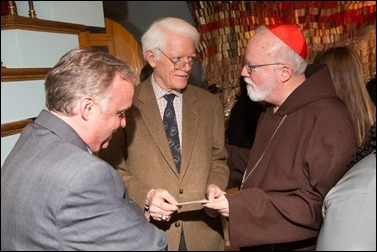
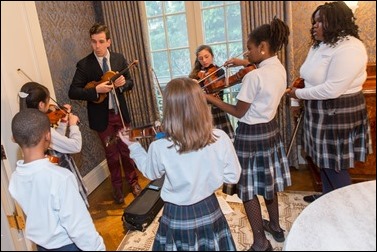
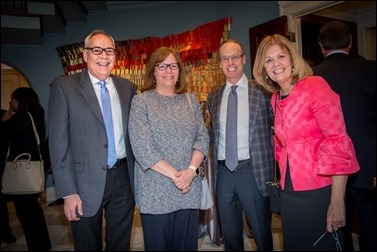
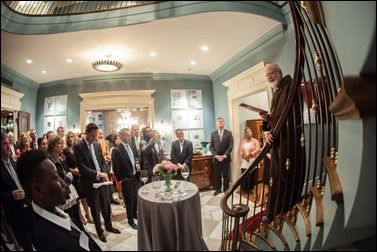
The purpose of the evening was to thank and honor benefactors of the campaign, who were responsible for the Lower Mills Campus of Pope St. John Paul II Academy.
– – –
Wednesday, I celebrated the funeral Mass for Deacon John Manion, who died at 89. He was from Galway in Ireland. In fact, he had just been with us at the Cathedral for our celebration of St. Patrick’s Day. Many people will remember him as the Deacon who would read the gospel in Irish.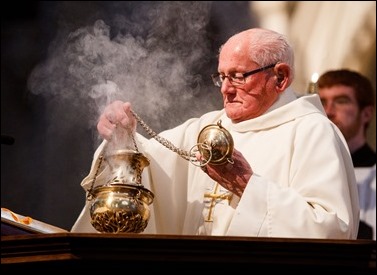
He worked for three decades as chaplain in Walpole prison and was much beloved in his parish of St. George in Framingham. The pastor, Father John Rowan, gave a wonderful homily and we heard a very moving remembrance by Deacon John’s daughter.
We were joined by many permanent deacons for the Mass as well as Father Silva, who was formerly in charge of the diaconate program.
– – –
Also that day, I had lunch with the members of the clergy personnel board. It was an opportunity to thank the outgoing members for their service and thank the new men for taking on the responsibility of the personnel board. It is such an important task and I know that it takes a lot of time and energy but the careful consideration of assignments is crucial for our priests and our parishes. We are very grateful for their collaboration in this process.
– – –
On Wednesday afternoon, we had the board meeting of Pope St. John XXIII National Seminary, which culminated in the dedication of the new Learning Center, which includes Mary and Jack Shaughnessy and Rev. Charles J. Healey, S.J. Pavilions. 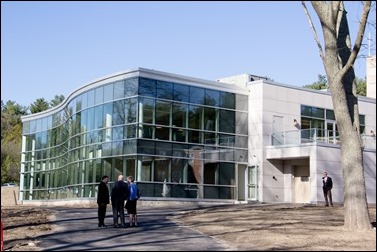
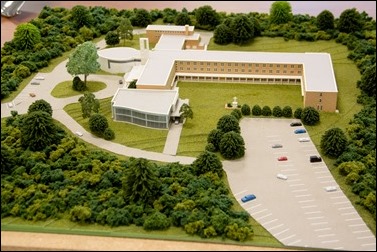
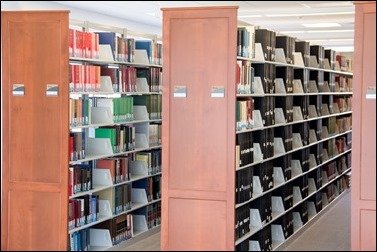
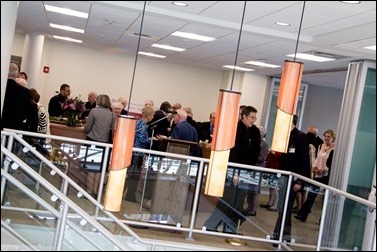
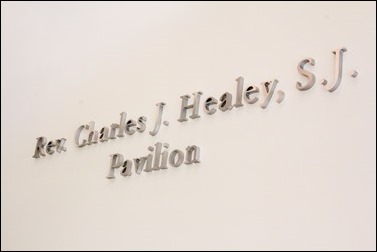
The redesign of the Chapel, the renovations to the front of the building and now the construction of this new Learning Center have completely transformed the seminary facilities.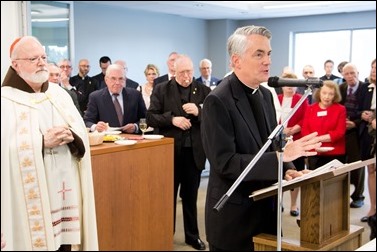
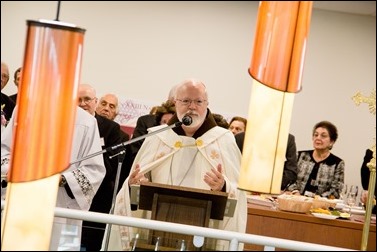
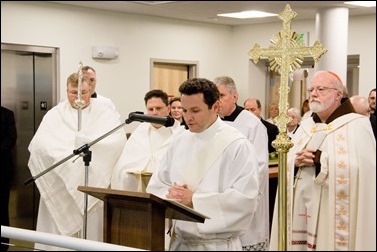
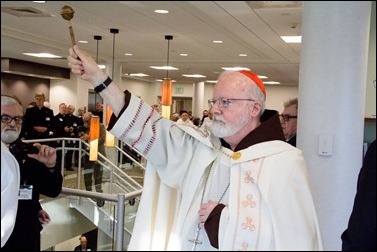
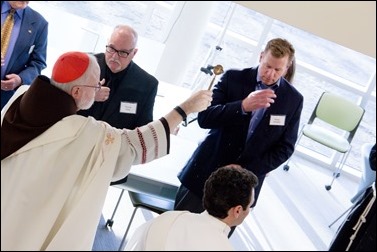
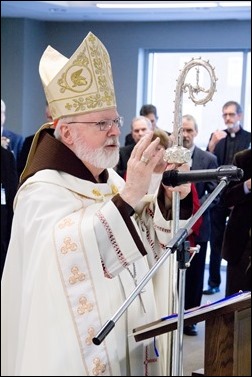
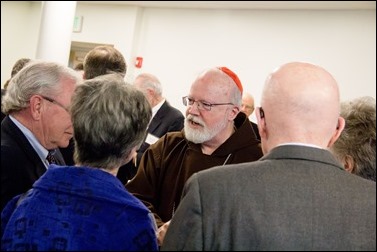
The new facilities are just stunning and we were so pleased with the outcome.
– – –
Then in the evening, I joined the Sisters of St. Joseph for their annual Living the Dream dinner. They had a very moving video of the ministries that have been carried out by the Sisters of St. Joseph. In the history of the archdiocese there have been almost 3,000 Sisters of St. Joseph who have served here. They educated literally tens of thousands of students here in the Archdiocese of Boston and are still sponsoring St. Joseph’s Prep, Fontbonne Academy and Regis College.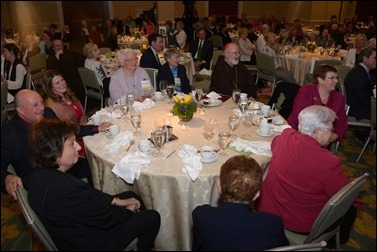
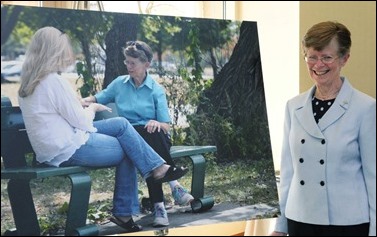
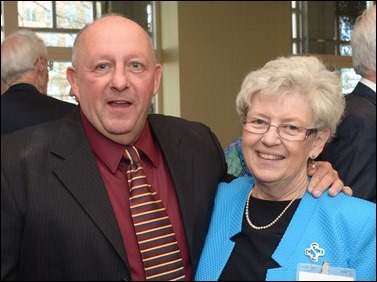
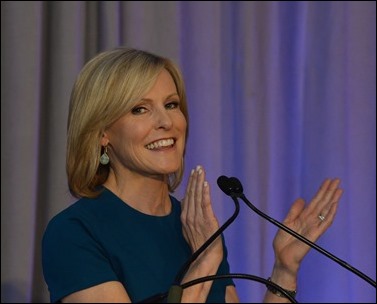
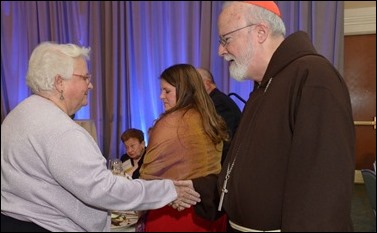
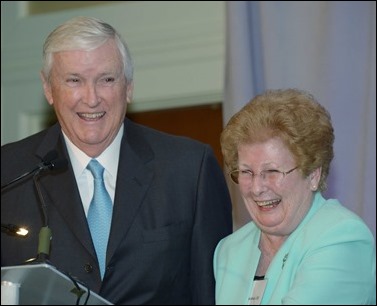
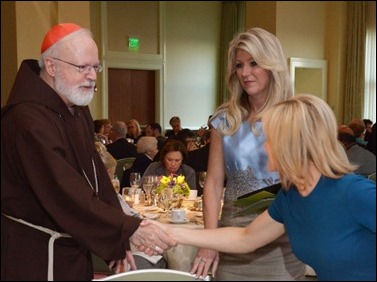
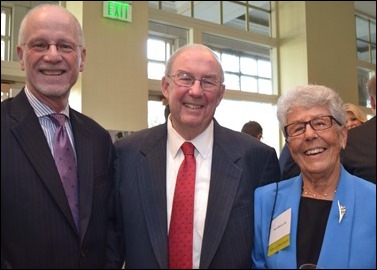
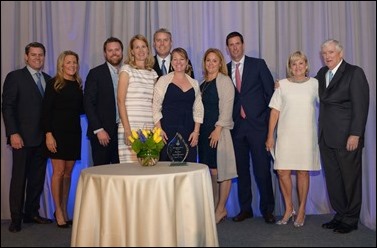
The evening was very well attended, which was a sign of the great affection and respect that the people of Boston have for the Sisters of St. Joseph. During the evening they honored one of the graduates of St. Joseph school in Dedham, Eileen Ahearn Connors, who received their Dear Neighbor award. It was just a lovely evening.
– – –
Thursday morning, I celebrated Mass at Blessed Sacrament in Walpole to celebrate the 50th anniversary of their parish school, which was originally staffed by the Glen Riddle Franciscans from Philadelphia. The pastor, Father Chip Hines and the former pastor, Father Tim Kelleher, joined us for the Mass.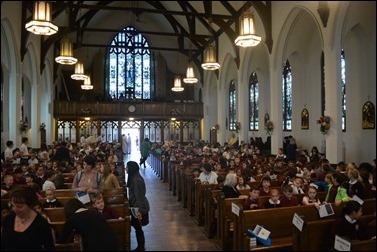
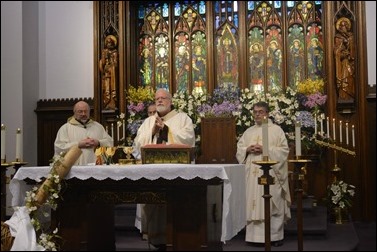
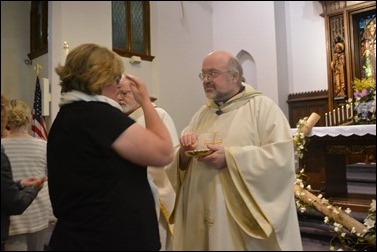
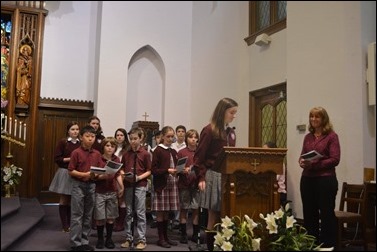
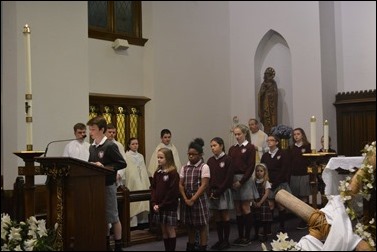
After the Mass, the students gave me a tour of the school. They have over 400 students enrolled there and Jim Spillman, the principal there, is doing a wonderful job.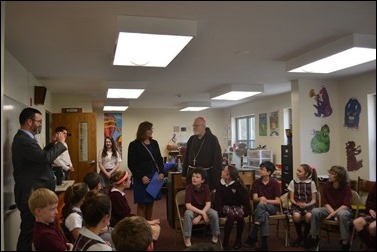
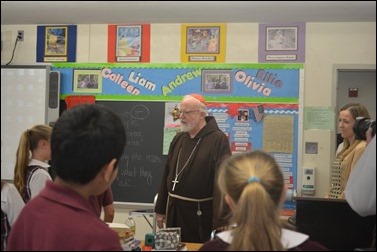
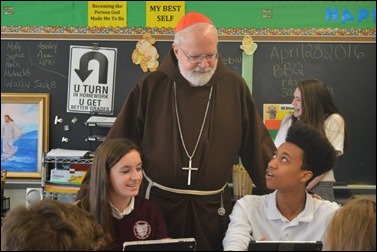
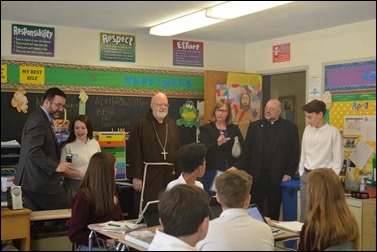
We also joined by our Superintendent of Catholic Schools Kathy Mears and Maureen Heil of the Missionary Childhood Association.
– – –
Finally, this week I want to mention that we are concluding Child Protection Month. 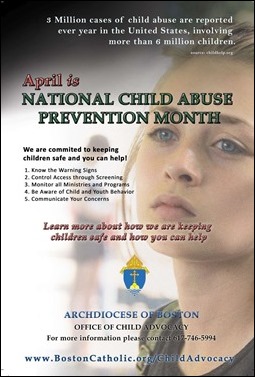 The theme of child protection is one that is so important in our community and in the world. We are happy to promote this cause by asking people to become involved in supporting the educational and preventative programs in our parishes and in our institutions.
The theme of child protection is one that is so important in our community and in the world. We are happy to promote this cause by asking people to become involved in supporting the educational and preventative programs in our parishes and in our institutions.
Until next week,
Cardinal Seán

